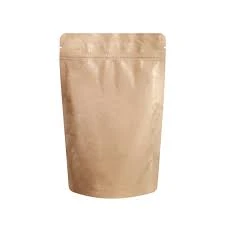- Afrikaans
- Albanian
- Amharic
- Arabic
- Armenian
- Azerbaijani
- Basque
- Belarusian
- Bengali
- Bosnian
- Bulgarian
- Catalan
- Cebuano
- chinese_simplified
- chinese_traditional
- Corsican
- Croatian
- Czech
- Danish
- Dutch
- English
- Esperanto
- Estonian
- Finnish
- French
- Frisian
- Galician
- Georgian
- German
- Greek
- Gujarati
- haitian_creole
- hausa
- hawaiian
- Hebrew
- Hindi
- Miao
- Hungarian
- Icelandic
- igbo
- Indonesian
- irish
- Italian
- Japanese
- Javanese
- Kannada
- kazakh
- Khmer
- Rwandese
- Korean
- Kurdish
- Kyrgyz
- Lao
- Latin
- Latvian
- Lithuanian
- Luxembourgish
- Macedonian
- Malgashi
- Malay
- Malayalam
- Maltese
- Maori
- Marathi
- Mongolian
- Myanmar
- Nepali
- Norwegian
- Norwegian
- Occitan
- Pashto
- Persian
- Polish
- Portuguese
- Punjabi
- Romanian
- Russian
- Samoan
- scottish-gaelic
- Serbian
- Sesotho
- Shona
- Sindhi
- Sinhala
- Slovak
- Slovenian
- Somali
- Spanish
- Sundanese
- Swahili
- Swedish
- Tagalog
- Tajik
- Tamil
- Tatar
- Telugu
- Thai
- Turkish
- Turkmen
- Ukrainian
- Urdu
- Uighur
- Uzbek
- Vietnamese
- Welsh
- Bantu
- Yiddish
- Yoruba
- Zulu
flexible packaging
The Future of Flexible Packaging Trends, Benefits, and Innovations
Flexible packaging has emerged as a leading solution in the packaging industry, revolutionizing how products are presented, preserved, and transported. As consumer demands evolve and environmental concerns take center stage, flexible packaging is not only meeting these needs but is also paving the way for new trends and innovations.
One of the primary advantages of flexible packaging is its versatility. Unlike traditional rigid packaging, flexible materials such as plastic films, foils, and laminates can be efficiently molded into various shapes and sizes. This adaptability allows manufacturers to design packaging that optimally suits their products, maximizing shelf space and reducing waste. The lightweight nature of flexible packaging also contributes to lower transportation costs and reduced carbon footprints, making it an attractive choice for companies aiming to improve their sustainability efforts.
Furthermore, flexible packaging offers superior barrier properties, essential for extending the shelf life of food and other perishable items. By preventing air, moisture, and light exposure, flexible materials help maintain product freshness, reducing food waste. This attribute is crucial in today’s market, where consumers are increasingly conscientious about food waste and the environmental implications associated with it.
The advancements in technology have played a significant role in the growth of flexible packaging
. Innovations such as resealable zippers, easy-tear openings, and spouts enhance user experience by making products more convenient to use. Emerging technologies like digital printing allow for high-quality, customized packaging solutions that can cater to specific consumer preferences and branding requirements. This level of personalization not only enhances brand visibility but also strengthens customer loyalty.flexible packaging

In light of growing environmental concerns, the flexible packaging industry is actively pursuing sustainable practices. Many companies are now focusing on the development of recyclable and biodegradable materials, responding to consumer demand for environmentally friendly packaging solutions. Innovations in bioplastics and compostable films are promising alternatives that maintain the performance and barrier properties of traditional plastic while minimizing environmental impact. Additionally, many manufacturers are investing in closed-loop recycling systems to ensure materials can be reused and repurposed, aligning with the circular economy model that emphasizes sustainability.
As e-commerce continues to expand, the demand for flexible packaging is skyrocketing. Online shopping has transformed consumer expectations regarding packaging, with customers seeking protection, convenience, and sustainability. Flexible packaging meets these demands by providing lightweight, space-efficient, and tamper-evident options. Brands that are quick to adapt to e-commerce trends by using flexible packaging are likely to gain a competitive edge in the market.
Moreover, as the global population grows, so does the demand for efficient food distribution. Flexible packaging plays a crucial role in facilitating this need by minimizing food waste, extending shelf life, and ensuring that products remain safe during transportation. With an increasing focus on global food security, the significance of flexible packaging is undeniable.
The future of flexible packaging is bright, driven by continued innovations and a commitment to sustainability. As consumer preferences shift toward eco-friendliness, convenience, and quality, the packaging industry is poised to adapt and thrive. Key players in the market are already investing in research and development to create new materials and technologies that align with these changing demands.
In conclusion, the flexible packaging industry is at the forefront of the quest for sustainable, efficient, and consumer-friendly solutions. As we look toward the future, it is clear that flexible packaging will continue to evolve, embracing innovations that streamline production, enhance user experience, and promote environmental stewardship. With its unmatched versatility and adaptability, flexible packaging remains a cornerstone of modern packaging strategies, catering to the dynamic needs of consumers and businesses alike. The continued collaboration between manufacturers, consumers, and environmental advocates will foster a packaging landscape that prioritizes sustainability without compromising on quality or convenience.













